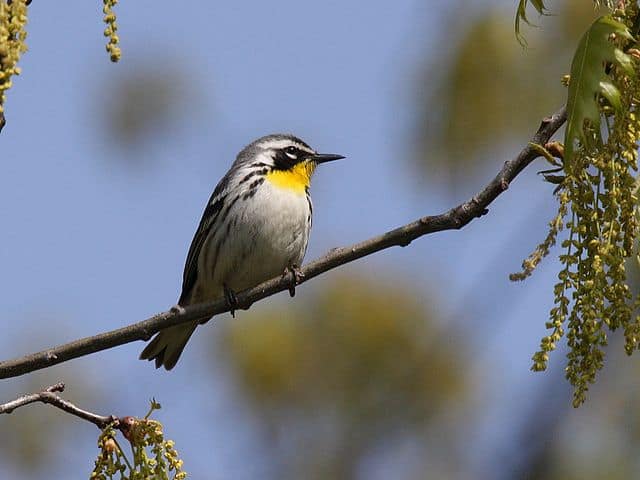Summer Birds of South Carolina (June, July, August)
While summer settles over the South Carolina landscape, the mountains provide a welcome relief from the heat and mosquitoes, as well as a good diversity of birdlife. By the middle of June many species have already nested, whereas some, like the Carolina wren, Eastern phoebe, and dark-eyed junco, begin preparing for their second brood. Elsewhere in the state blue grosbeaks and eastern kingbirds are common residents of open country, their breeding activities extending well into midsummer. Colorful summer inhabitants along the coast include painted buntings, orchard orioles, and the familiar red-winged blackbirds.
As summer progresses into the months of July and August many bird species disperse from their nesting grounds and gather in mixed flocks. This phenomenon, known as post-breeding dispersal, is especially apparent in wading birds, which include great egrets, snowy egrets, little blue herons, and great blue herons. These birds, including many young, leave their rookeries and disperse inland along the rivers into the piedmont or north along the coast. During this period they are often found congregating near abundant food sources such as the tail races below reservoir dams, rocky shoals of rivers, and at inland lakes and farm ponds. Among these waders are such rare visitors as the reddish egret, which occasionally wanders north along our coast to Huntington Beach State Park, and wood storks that disperse to various prime feeding locations like the Silver Bluffs Audubon Sanctuary near Aiken.
One of the most amazing avian spectacles in summer takes place on a small island in the middle of Lake Murray near the town of Lexington. From mid-July through mid-August each year, hundreds of thousands of purple martins congregate on 12-acre Lunch Island to form a premigratory roost or staging area. This roost has grown since it was first discovered in the early 1990s and is now so large that it’s easily detected by weather radar. Purple martins leave the roost to forage each morning before dawn, dispersing outward in a 360 degree radius. This departure pattern creates a distinctive donut-shaped ring on weather radar. Birds may forage as far as 75 miles away during the day, but return to the roost each evening in late afternoon, darkening the sky with their numbers.
Some observers have estimated that at its peak as many as 700,000 purple martins utilize Lunch Island, making it the largest known purple martin roost in North America. Although no one knows how long these swallows will continue to use Lunch Island, its significance has led to its designation as the nation’s first purple martin sanctuary. By studying weather radar, researchers have discovered other purple martin staging areas across the southeast, but none thus far comparable to that on Lake Murray.
Late summer is also a good time to observe migrating shorebirds. Coastal shorelines and mudflats support the largest concentration of birds, including semipalmated plovers, whimbrels, and short-billed dowitchers. Inland, pond edges, shorelines, rivers, and mudflats also provide habitat for migrating sandpipers, such as the common spotted sandpiper, solitary sandpiper, and least sandpiper. More exciting visitors, like the rare migrant buff-breasted sandpiper, upland sandpipers, and American golden-plovers, are occasionally discovered on large expanses of short grassy fields at sod farms and similar locations.




